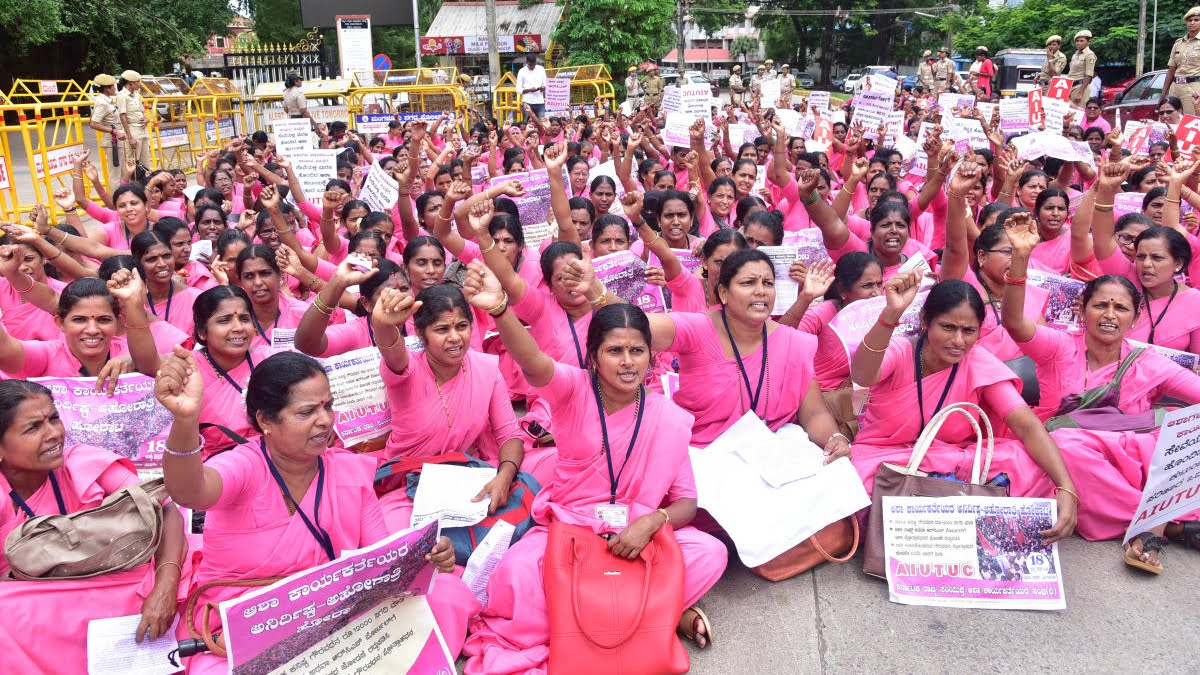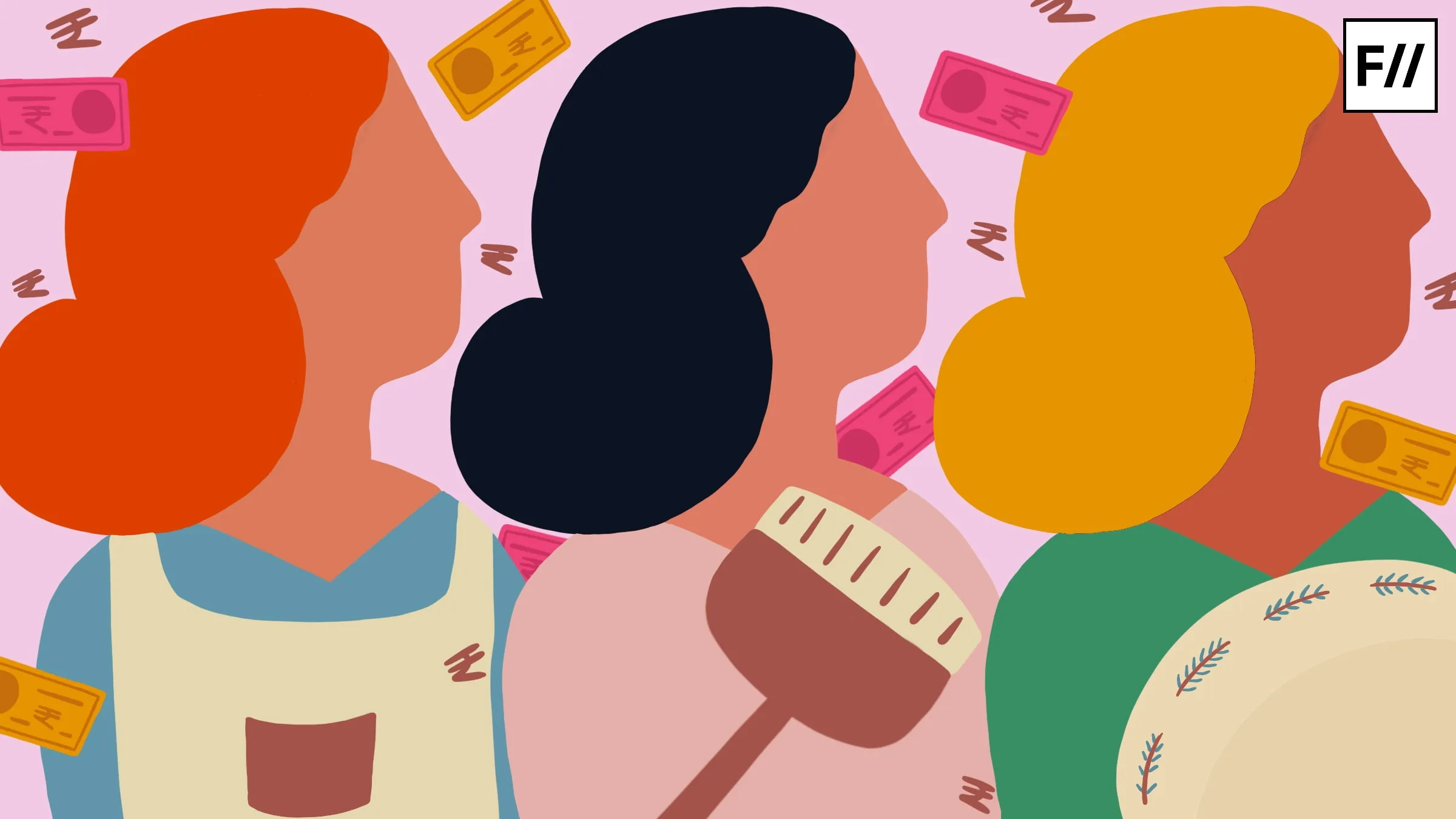Recently, around six lakh Accredited Social Health Activists, commonly known as ASHA workers in India went on a 2-day nationwide protest from August 7-8 this year. According to the press release by ten central trade unions, including the National Health Mission (NHM) workers, the basic requirements of ASHA workers and other frontline workers have not been met. And thus, they were left with no option but to go on a strike. They lack the minimum safety, insurance and risk allowance in these challenging times. And almost all of these workers are women.
It is thus interesting to see how the primary health and caregiving sectors that has large percentage of women employees, have always been one of the most underpaid and undervalued ones. According to the World Health Organization (WHO) data, women form 70 percent of the total workers in the health and social sector. However, there is a gender pay gap of around 28 percent on average here, making it one of the most biased sectors in terms of wage payments.
Also read: ASHA In The Time Of COVID-19
The ASHA workers of the Indian healthcare system are some of the most exploited and least paid health workers in the world. There is no fixed salary for an ASHA worker – she earns a minimum honorarium of Rs 2000-4000 per month and can also receive performance-based incentives.
The ASHA workers of the Indian healthcare system are some of the most exploited and least paid health workers in the world. One ASHA worker is responsible for conducting health promotion activities for 1000 people in a village. There is no fixed salary for an ASHA worker – she earns a minimum honorarium of Rs 2000-4000 per month and can also receive performance-based incentives. This is below the minimum wage rate. Policy workers have often argued that providing a fixed salary to the ASHA workers reduces their incentive and accountability. A fixed salary would also mean a force of health workers who would be entitled to government pension among other benefits. ASHA workers often end up working seven days a week without a minimum salary, in contrast to other male-dominated sector workers working in the equally exploited environment but receiving at least a wage according to the minimum wage requirement. Important caregiving tasks like visiting homes of the pregnant women in the villages or spreading awareness on vaccination or sanitation and mass mobilisation drives are ‘unpaid’.
The unequal pay structure in the health sector makes women especially vulnerable in times of a health emergency. The women health workers are facing what we can call as a “double burden” of responsibilities. On the one hand, they have their families to look after, along with the never-ending household chores. And with the lockdown, women’s household chores have only increased. According to a series of surveys conducted by KONDA and the United National Development Program (UNDP), women are doing four times the household work as compared to men.

On the other hand, female health care workers are also burdened with longer shifts and additional work because of COVID-19. Reportedly, some ASHAs are working 14 hours a day for an honorarium of a mere INR 4,500! Their workload has seen a drastic increase. Along with all the work that they were doing previously, they are now responsible for tracking the health of people in quarantine, keeping records of Severe Acute Respiratory Illness (SARI) as well as of Influenza Like Illness (ILI) patients and prepare their reports, thus also increasing their health risks and chances of contracting the dreaded virus. The documentation work was already a handful for the workers, and this has now increased even more. The ASHA workers are also more vulnerable, not only because they are working in the quarantine centres but also because of the meager compensation that they receive for this.
By enrolling ASHA workers as volunteers who just need an honorarium amount to get by, the patriarchal notion of care work as a woman’s area of labour continues to be propagated. Further, it is easier to exploit female workers as compared to male workers.
Also read: The Pandemic Is A Timely Reminder Of The Issues Faced By The ASHA Workers
It is not surprising that the health and caregiving sector consider women to be the perfect employee. By enrolling ASHA workers as volunteers who just need an honorarium amount to get by, the patriarchal notion of care work as a woman’s area of labour continues to be propagated. Further, it is easier to exploit female workers as compared to male workers. I remember talking to one Mamata worker as part of my research in February in Madhya Pradesh. Mamta or Yashoda workers are a part of the Indian government’s commitment to work towards a reduction in infant mortality rate. In most states, Mamta workers accompany pregnant women to hospitals to provide initial care to the newborn and the mother. She had mentioned how difficult it was to even find a place to sit down at the hospital where she works and so her only demand from the authorities was to have a place where the Mamatas could sit once during the day.
The recent health crisis should be an eye-opener; health workers are at the forefront of this battle. They deserve better. The ASHA workers and other female health care workers deserve better.
Ritwika Patgiri is a Research Scholar in the Faculty of Economics, South Asian University (SAU). Her research interest lies in the areas of gender and economics. She has earlier written for Women’s Web, In Plainspeak, The Sentinel, Times of Assam and Caleidoscope on various aspects of gender.
Featured Image Source: Deccan Herald




